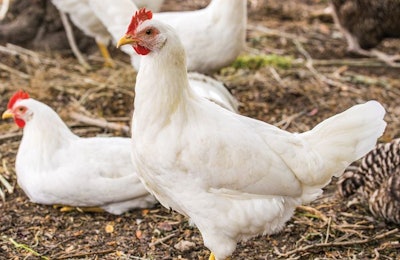
Perspectives on the role of fiber in poultry diets are changing in response to the trend toward antibiotic-free production, with a shift in emphasis from its nutritional value to its effects on the microbiome and gut function.
Poultry nutrition formulation has always focused on defining the digestible requirements of different nutrients and energy, and providing them in the most cost-effective way. In this sense, the use of more digestible ingredients, or tools, to increase nutrient digestibility may improve performance, as fewer nutrients are needed to achieve the minimum requirement defined. This is also helpful for gut health as it means that fewer indigestible nutrients reach the lower part of the gut.
This approach is well established for nutrients such as starch and amino acids that can be absorbed by the broiler and used for growth. If present in high concentrations within the hindgut, however, they may lead to a reduction in gut health characterized by the development of undesirable bacteria, resulting in a reduction in performance.
When you consider fiber, however, the goal of improved digestibility in the upper part of the gut does not necessarily apply.
Although fiber has an energy value, improving its digestibility does not necessarily improve animal performance. Several of the sugar monomers that form fiber, such as xylose, show an anti-nutritive effect when absorbed by the animal, while others, for example cellulose, are not able to be digested during the short period of time that they pass through the poultry gastrointestinal tract (GIT).
Identifying broader benefits
The benefit of fiber in poultry feed formulation is not related to its nutritional value per se, but the effect fiber can have in the GIT, such as the stimulus of gizzard development and villus structure, which in turn improves the digestion and absorption of other nutrients. The stimulus of hindgut fiber fermentation can lead to the formation of beneficial products such as volatile fatty acids, helping to control the growth of undesirable bacteria, improve gut junction and reduce immune system reactiveness.
This represents a potential change in how nutritionists approach their role. It means that, when formulating with fiber, we are not just looking at the need to increase the digestion and absorption of that one nutrient. Instead, it is important to evaluate how the presence of fibrous structure may influence gut health as a whole.
Several feed additives work by stimulating the development of a fiber fermentation microbiome, but through different routes: the provision of bacteria that ferment fiber (probiotic); provision of the substrate for the development of a fibrolytic microbiome (prebiotic); "training" the caecal microbiome (xylanases); offering the product of fiber fermentation (protected acids such as propionate, acetate and butyrate); and development of the gastrointestinal tract such as the use of course ingredients.
A big challenge for nutritionists moving forward will be to understand the characteristics of fiber present in ingredients. By understanding how these different types of fiber can stimulate the development of the GIT, nutritionists can identify how to develop a fiber fermentable microbiome in the lower part of the gut as early as possible, embodying the essence of the term "gut health."















